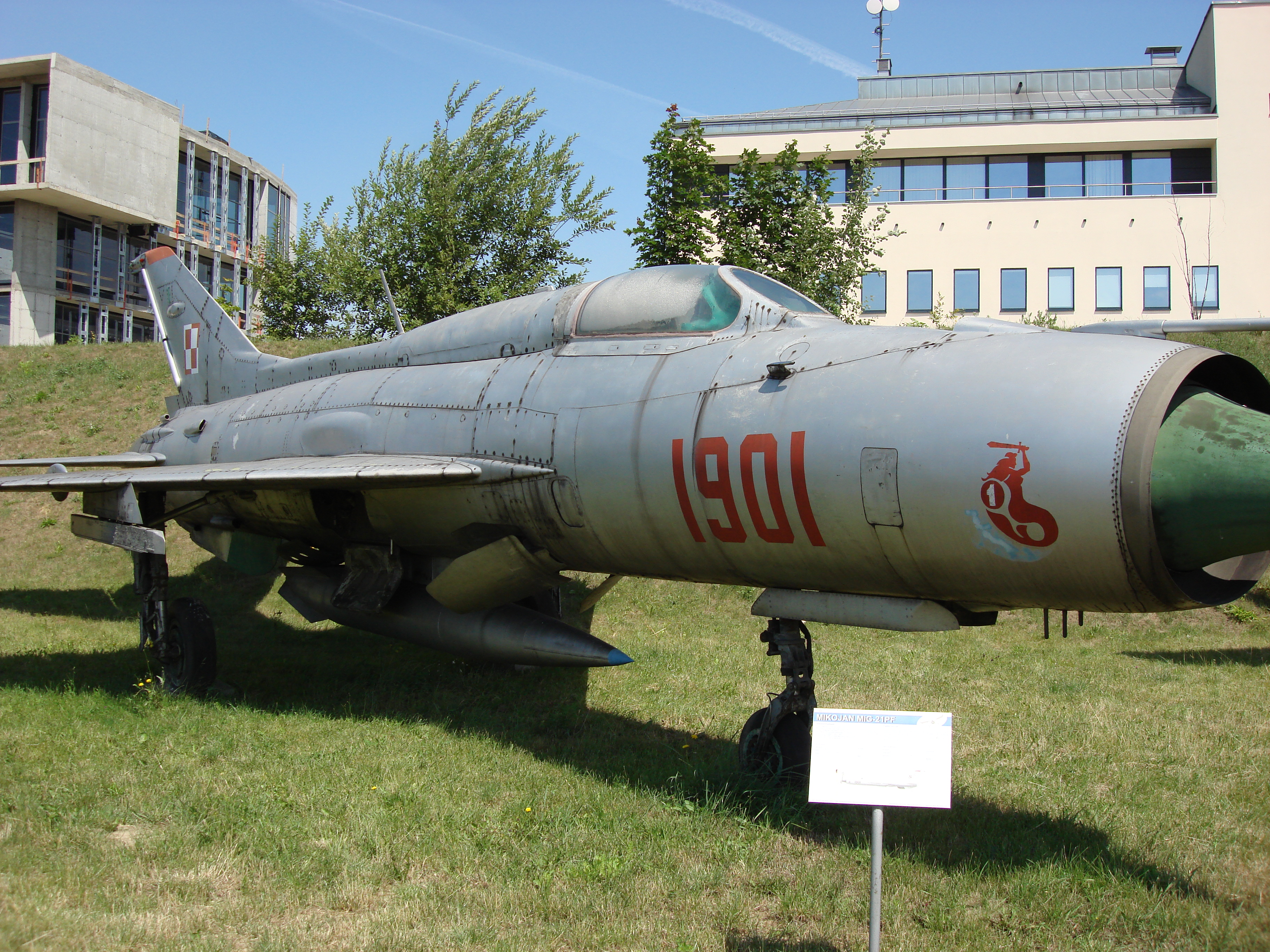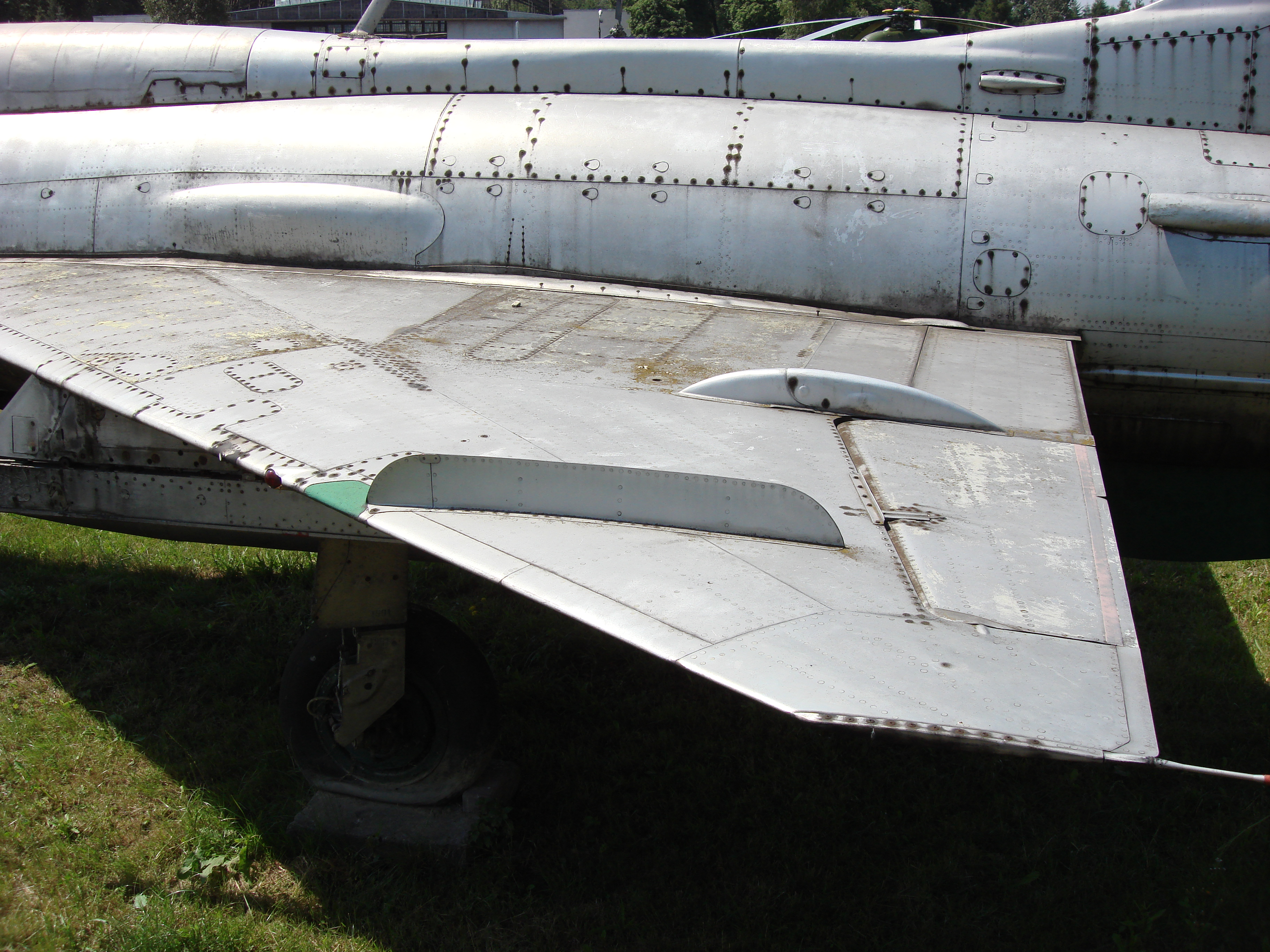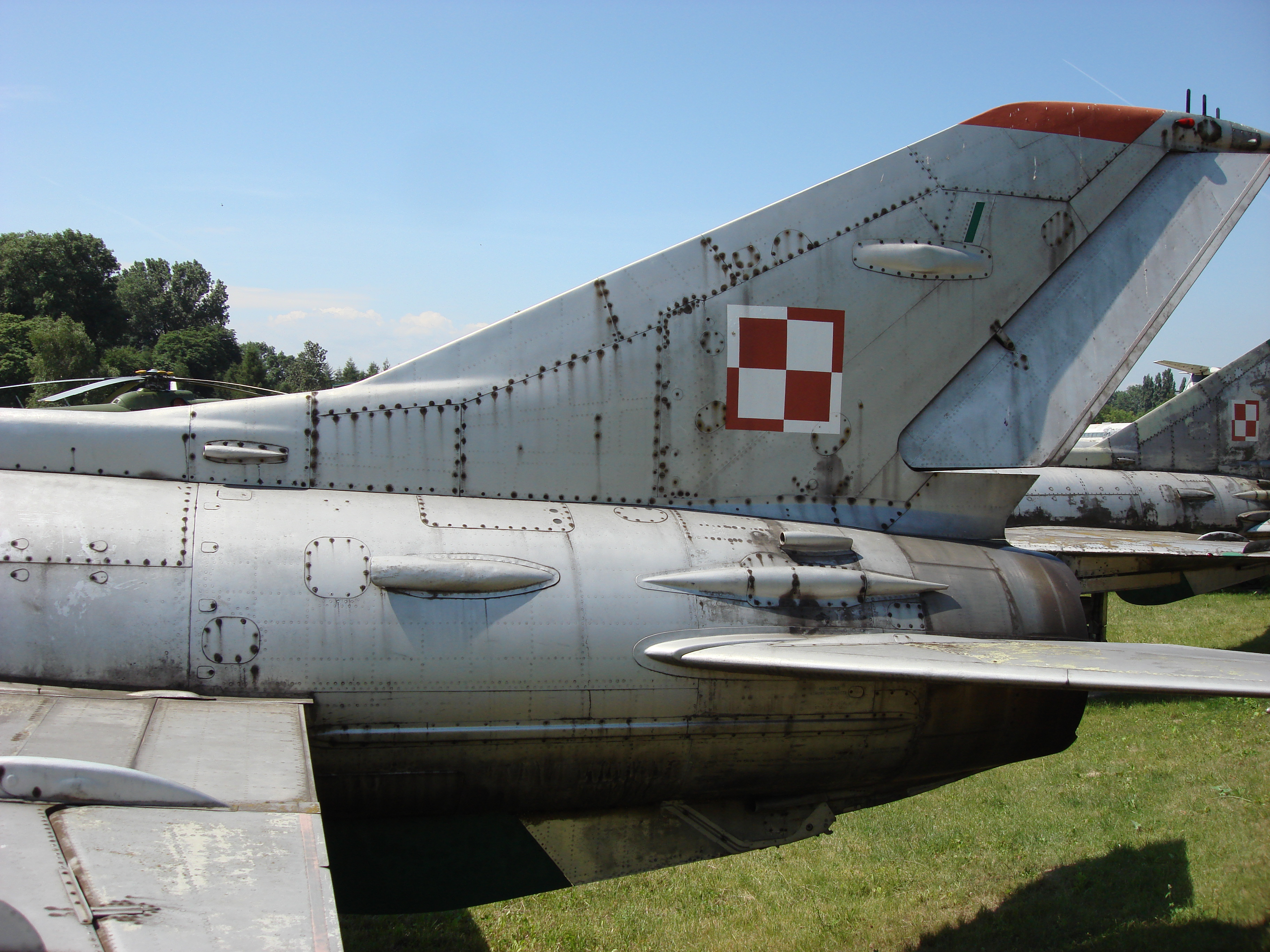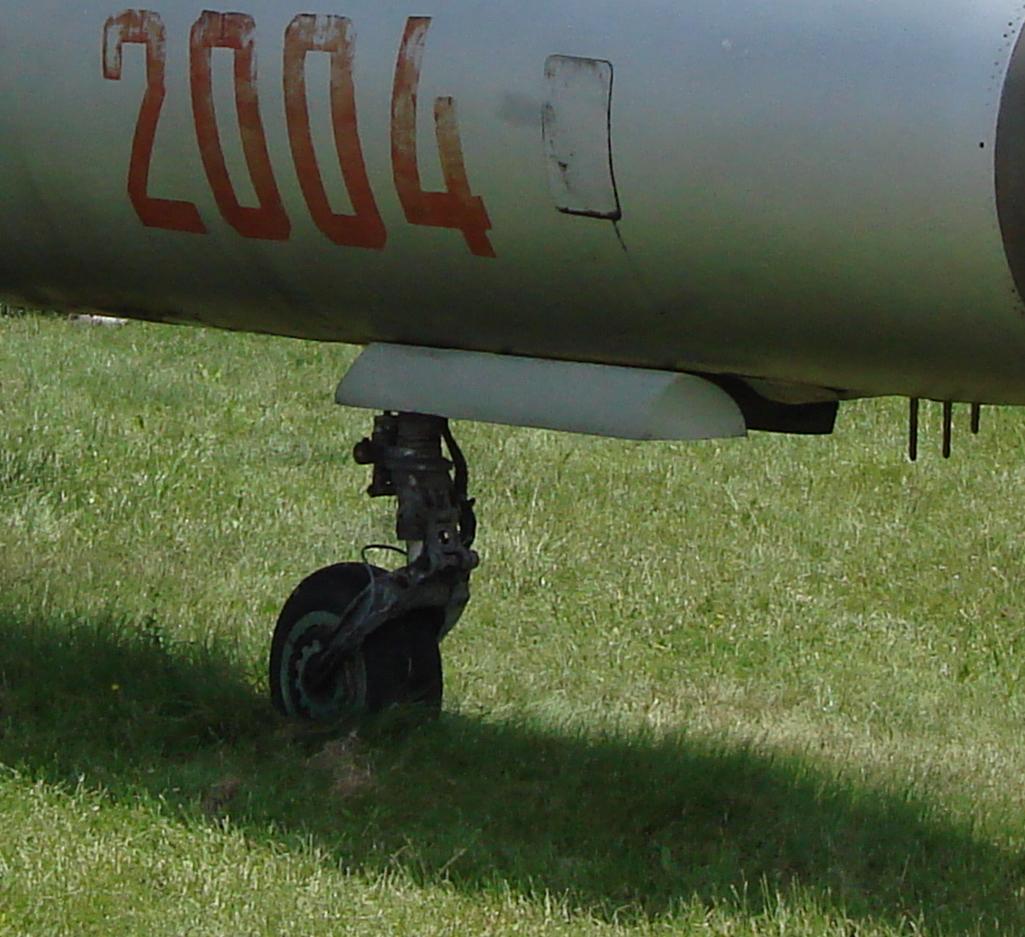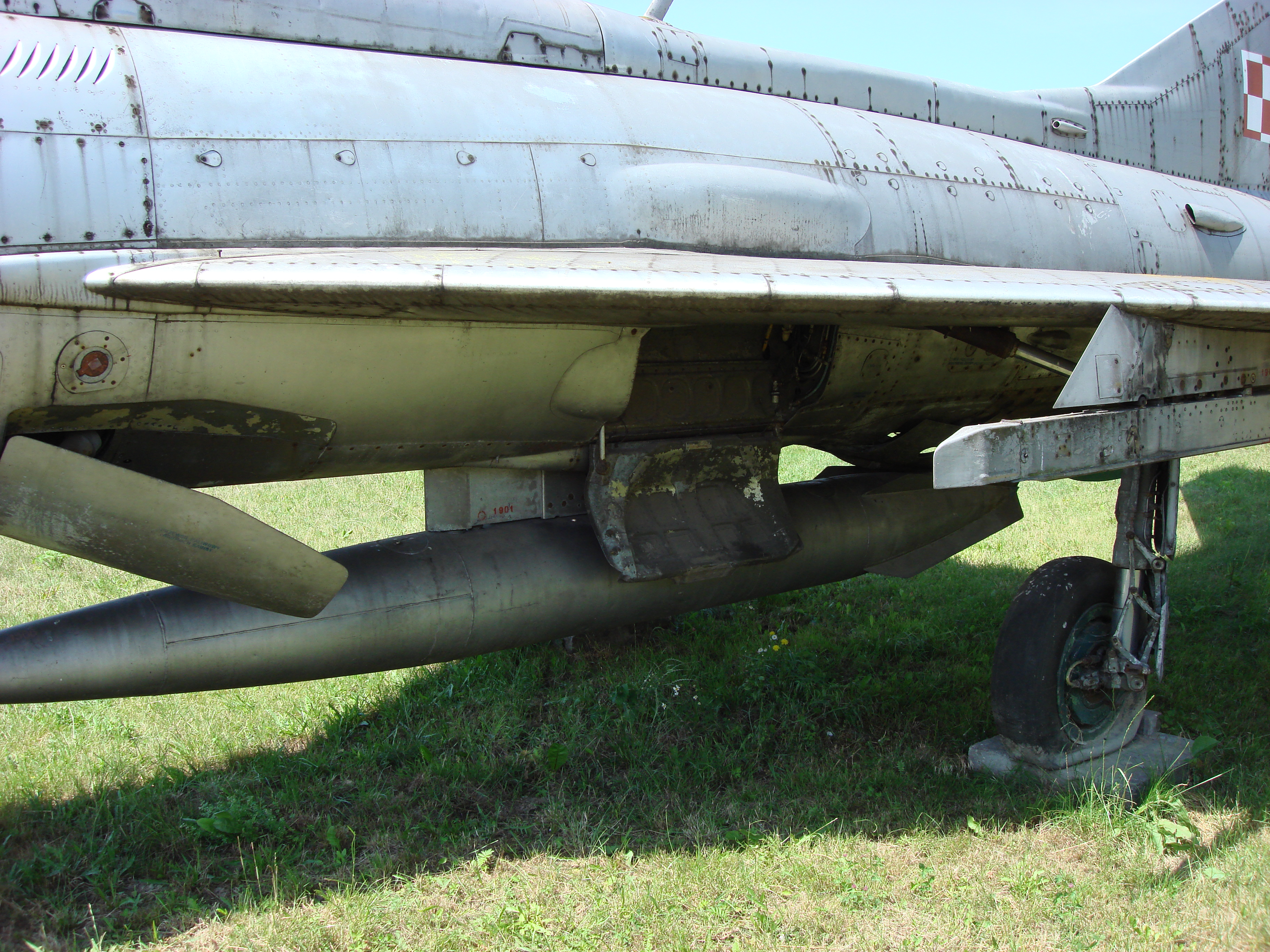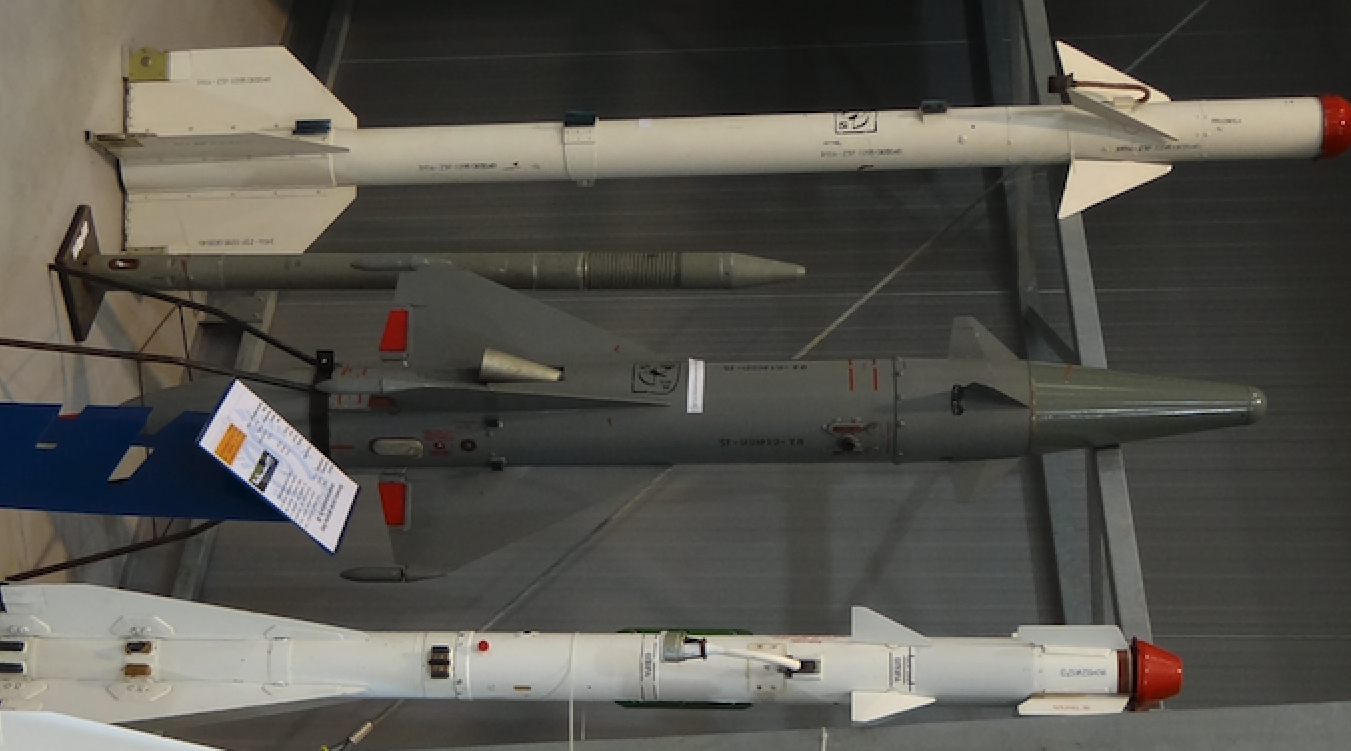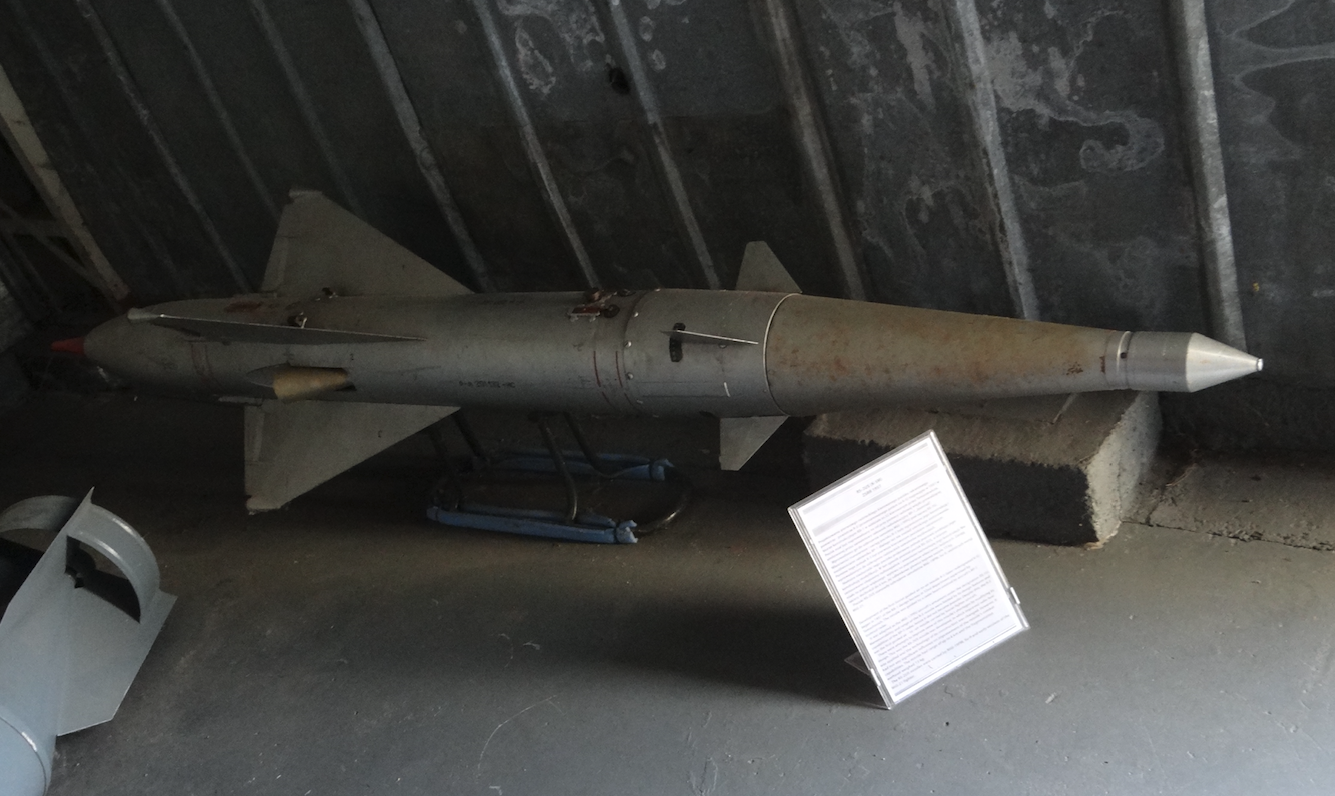Kraków 2010-08-31
Construction
188b Section 1964-04-14.
OKB Mikojan and Guriewicz MiG-21 PF in Poland.
MiG-21 PF No. 761901 nb 1901 Czyżyny 2006. The emblem 1. PLM Mińsk Mazowiecki on the fuselage. Compared to the MiG-21 F-13, the larger inlet cone and the entire front fuselage section are clearly visible. The superstructure can be seen above the fuselage with fuel tank No. 7. Photo by Karol Placha Hetman.
Construction MiG-21 PF typ 76.
This is the second version of the MiG-21 aircraft received by Poland. See MiG-21 F-13.
Single-seat, single-engine, supersonic fighter aircraft. Equipped with RP-21 M Sapfir radar station.
Compared to the first generation (MiG-21 F-13) the major changes consisted of;The use of a radar station (radar sight) placed in an enlarged inlet cone. That is why the front part of the hull was rebuilt. It obtained a larger diameter. The cone is larger, but it can also automatically take one of three positions.
The fighter has been able to cooperate with the Wozduch-1 ground-based guidance system through the ARŁ-S Lazur telemetry radio receiver. It makes it easier to get the aircraft into the back sphere of the enemy.
The KAP-1 / KAP-2 / KAP-2 K automatic remote control was installed.
Only cannon removed. After the experience of the Vietnam War, a container with a cannon was developed that can be hung under an airplane.
The range of p-p missiles was increased by RS-2 US missiles cooperating with a radiolocation station. These missiles were to be the basic armament of the aircraft.
Added fuel tank No. 7 on the fuselage behind the cabin.
The aircraft is equipped with a device for escaping to a horizontal flight from any situation, e.g. when a pilot has lost spatial orientation.
The front aerodynamic brakes were enlarged from 0.760 m 2 to 0.884 m 2 and of course they were redesigned due to the lack of protrusion on the cannons mounted in the hull.
The pitot probe was moved over the air inlet. Previously it was under the engine air intake.
The aircraft received larger wheels (pneumatics) for the use of ground pavements.
"Delta" wing with bevelled ends (0.3 m), slant 57 degrees, total area 23 m 2, symmetrical wing profile CAGI S-12, relative thickness 4.2% at the base and 5% at the end, wedging 0 degrees , raise -2 degrees, chord at the base 5.97 m, at the end 0.46 m, the structure is the main, auxiliary, front and rear girder. Covering 1.5 to 2.5 mm thick. There are two fuel tanks in each wing. 2 armament hooks under the wings. The wings are equipped with ailerons, with a total area of 1.18 m 2, are swinging at 20 degrees. The 1.84 m 2 flaps are tilted to take off 25 degrees, landing 45 degrees.
The fuselage with frontal air grip, with central movable cone. The cone from the speed of the Ma-1.5 plane begins to move forward and at the speed of Ma-1.9 it occupies the extreme extended position. The cone is equipped with a wall suction system. The axis of the cone is inclined 3 degrees downwards. The cone moves 20 cm, and on the ground during operation it can be extended by 60 cm. The cone is made of 14 mm thick radio-transparent material. Behind the cone, the channel divides into two to bypass the cabin on the sides. The channel is equipped with anti-pump flaps and additional grips at the cabin height. These grips are equipped with covers to prevent foreign bodies being sucked in from the ground under the front wheel. The airframe was equipped with three aerodynamic brakes. The first two are a pair and are placed in front of the main chassis. They have an area of 2 x 0.442 m 2. They are tilted 35 degrees. The third aerodynamic brake was placed under the fuselage behind the main chassis. It has an area of 0.47 m 2, is perforated and tilted by 40 degrees. An aerodynamic steering wheel was placed after the fuselage. The braking parachute with an area of 16 m 2, can be released only after the touchdown and after braking discard it. Hermetic cabin and automatically air-conditioned. The KM-1 armchair provides rescue at a speed of 130 to 1,200 km / h and a height of 0 m. The cabin cover consists of a windbreak with 55 mm thick armored glass. The glass is de-iced by spraying with spirit. Opened upwards. When the pilot catapults, the cover provides additional protection for the pilot against air impact.
The horizontal slab formation, area 3.94 m 2, span 3.74 m, angle of attack 55 degrees, downward tilt 7.5 degrees, up 16.5 degrees. There are anti-flutter masses at the ends. Vertical fixture with a skew angle of 61 degrees and 21 minutes, relative thickness 6%. Ballast surface 5.32 m 2, rudder 0.965 m 2, swing 25 degrees.
The chassis has all single wheels. All wheels with disc brakes. The front shin is retracted forward. Wheel size 500 x 180, pressure 7 atm. Shimmy muffler on the shin. Main wheel size 800 x 200, pressure up to 8 atm. Chassis spacing 2.787 m., Base 4.71 m.
The MiG-21 PF power unit.
The aircraft received a more powerful R-11 F2-300 engine with 1 x 3 870 kG thrust, with 1 x 6,000 kG afterburning. The fuel installation reached a capacity of 2,780 liters, by adding an over-hull, No. 7 tank with a capacity of 170 liters.
Armament MiG-21 PF.
Missile RS-2 US.
APR Missiles appeared in the armament. RS-2 US. First, some history of weapon systems associated with the NCR missile. RS-half. The first mass-produced guided missile (kpr) in CCCP to combat air targets was the RS-1 U missile, which was developed in 1956, and shortly thereafter a more widespread variant appeared under the designation RS-2 U. The missile was adopted as armament of MiG-17 PFU and MiG-19 PM air defense fighters. The latter was operated in Poland. Both aircraft carried 4 missiles under their wings on APU-4 beams. Then, especially for the RS-2 U missile, the Izumrud-2 radar sight was developed, which in series production received the designation RP-2 U.
In 1958, the Su-9 aircraft received the RP-2 U radar sight and 4 RS-2 U missiles.
In 1959, a modernized version of the RS-2 US / K-5 M missile appeared with the RP-9 radar sight. As the first new weapon system, it received Su-9 air defense fighters, and so a new version was created with RP-9 radar sight and 2 RS-2 US missiles. A novelty on board the Su-9 aircraft was the Lazur-S guidance system cooperating with the Wozduch ground system.
In 1960, it was decided to mount this weapon system on MiG-21 fighters and thus the MiG-21 PF was created.
Basic missile data; length 2.50 m, hull diameter 0.18 m, span 0.65 m, projectile weight 83.20 kg, explosive mass 15.2 kg, max range 8 km. The missile was built in the duck system. The front part houses the explosive and the hull with forced defragmentation. The control system executive kit is then located. Then a rocket engine, for solid propellant with two nozzles placed on the sides of the hull. The rear compartments of the missile contain electronic systems. The fuselage tip is a receiving antenna. The detonator uses a radio, proximity and self-eliminating detonator when it misses the target.
How is the guidance carried out?
Semi-active radiolocation guidance was used. The radar sight of the aircraft sends radiation which, reflected from the target, is picked up by the projectile and converted into appropriate signals to correct the flight path. The semi-automatic of such a system consists in the existence of a transmission line between the missile, aircraft and target. The system operates on radio waves of the centimeter range. The difference between active and semi-active is that the active target is guided by the waves sent by the projectile.
The RS-2 US missile is adapted to destroy airborne objects from the rear hemisphere in "all weather conditions". It can also be fired for above-ground and surface purposes, but generally with their visibility. After leaving the launcher, the projectile stays in the electromagnetic radiation beam sent by the tracking radar target. This requires the pilot to constantly illuminate the target until the bullet explodes. The pilot cannot suddenly maneuver the plane, as communication with the missile may break.
R-3 missile
MiG-21 PF aircraft still had the possibility to use NCR missiles. R-3 / K-13, which are the basic armament of the MiG-21 F-13.
Because the RS-2 US missiles had a relatively high failure rate and low efficiency, therefore it was allowed to develop a version of the NCR missile. R-3 semi-active radio-controlled. This is how the R-3 R missile was made. It is longer and heavier than the thermally-guided version. The range remained unchanged (8 km) and the explosive charge also (11.3 kg). Its basic data; length 3.42 m, hull diameter 0.127 m, weight 83 kg.
GP-9 cannon
For the MiG-21 PF / PFM aircraft, the GP-9 gondola (puszecznajna gondola) was developed containing a 23-mm double-barrel cannon GSz-23 with a supply of 200 rounds. The nacelle is mounted on the same hitch as the additional fuel tank. It must be clearly said that the MiG-21 PF obtained the ability to move this storage tank during operation.
Data T-T MiG-21 PF
Written by Karol Placha Hetman

